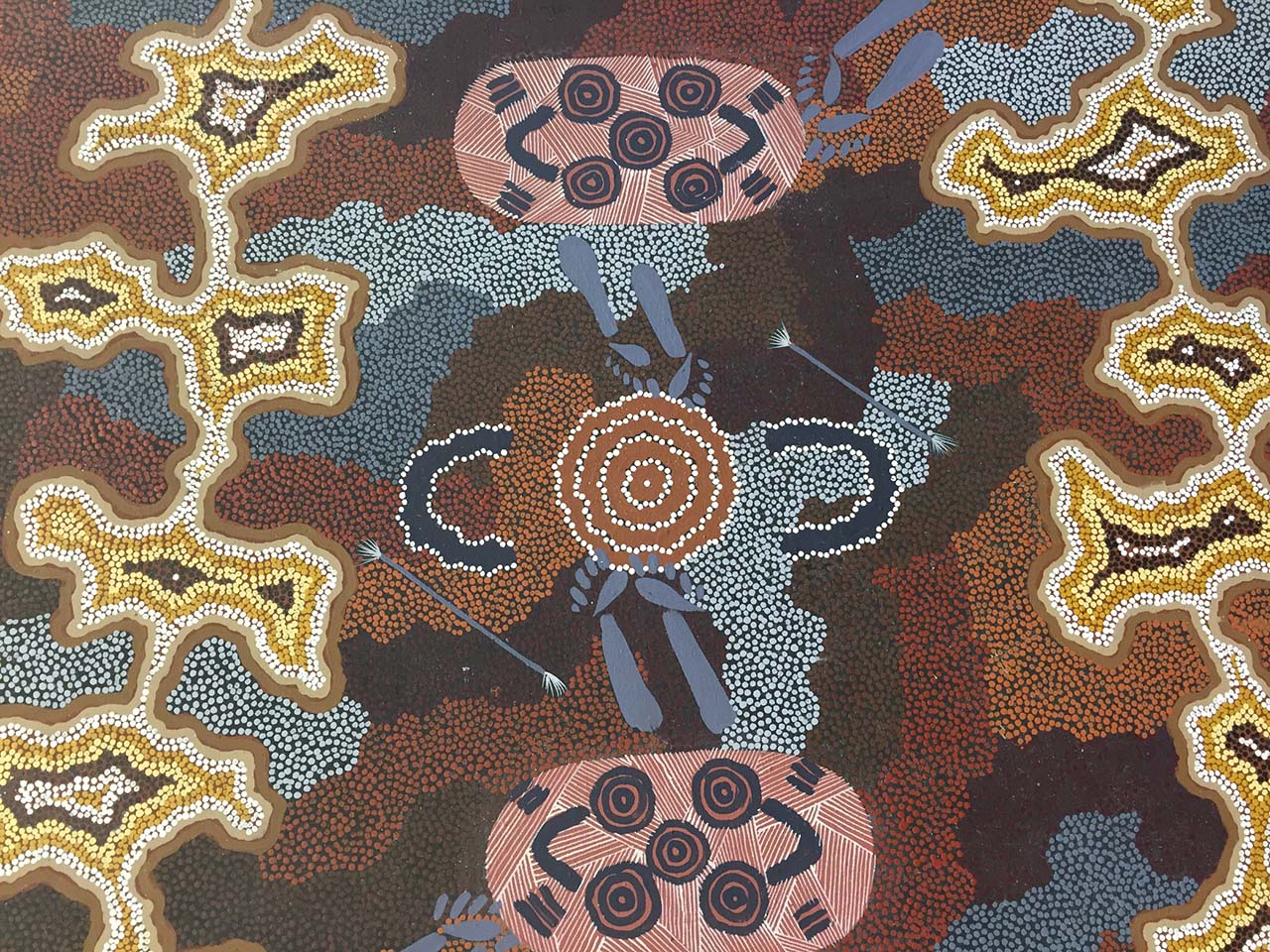Who Started The Modern Desert Aboriginal Art Movement?
In this article David Wroth discusses the question about who started the modern Desert Aboriginal Art movement - Aboriginal or white Australians? This question was asked at an exhibition of Aboriginal Art in Bucharest, Romania earlier this year.

Who Started The Modern Desert Aboriginal Art Movement?
I said it was like an accident. In a sense, it was the accident of school teacher Geoffrey Bardon being posted to Papunya in 1971. He asked the young children to make paintings that were about their culture not using the Western traditions for their paintings.
Then the old people who worked at the school said to him, "Why are you asking young children to demonstrate our culture when we are the ones with authority for this?" Old people understand culture, and children have to be brought into the culture through initiation, and through law practice over time. That was a revelation for one school teacher.
Geoffrey Bardon was then able to make arrangements with the Aboriginal elders who worked at the school. These were very senior people who were law men but worked in the school as helpers. They painted the first mural on the wall of the school. They then went on to make the first collections of individual paintings by desert artists.
In this sense, there was an accident because a teacher asked the children to open a door into Aboriginal culture. He then found that the real people to open those doors were old people. Those old people then built a trust relationship with Geoffrey Bardon, and made those first paintings.
In a way, I feel that it was an accident, but it was also possibly an idea whose time had come. At the time children were still forbidden to use Aboriginal languages in many schools. They had been more or less forced to take on modern Australian values, and ways of doing things. Schools discouraged anything that had traditional content.
It was the 1970s. Things were changing, certain attitudes in Australia changed, and politics changed. The availability of acrylic paint was another factor that made painting in the desert possible. The initial accident was perhaps backed up by a certain goodwill and good luck.
Goodwill came from the Aboriginal people that they, in spite of the history of Aboriginal and white relationships, were interested in opening up the door to their culture. That was a big decision and a big process where they had to decide what parts of their culture they could share with outsiders. They were dealing with the issues of secret and sacred nature, and the sharing of the knowledge that they were prepared to make paintings about.
There was a great deal of goodwill on behalf of the Aboriginal people in simply believing that there was any interest. Geoffrey Bardon must have indicated that some white people would be interested and despite everything they were prepared to believe him.
No doubt it seemed that white people were interested in business, and control of the land, and other things that were quite foreign to Aboriginal culture. Geoffrey Bardon must have developed a sense of trust that enabled him to suggest what he did. Selling the artworks was a business that had a lot to do with Aboriginal culture, it was a very much an unknown for both parties.
Bardon felt his credibility was on the line with those senior men. He went a long way in collecting stories, and encouraging the whole process to go forward.
However an important group of elder men at Papunaya who made the decision to open up their stories using art. That decision spawned an art movement.
So who lit the spark that became the fire of this remarkable art movement? There were certainly enabling influences. I think it was courage and vision of the Papunya elders that lit the spark. It was their co-operation with each other and their decisions that really started it all.
Read more: The Early Influence of Geoffrey Bardon on Aboriginal Art
